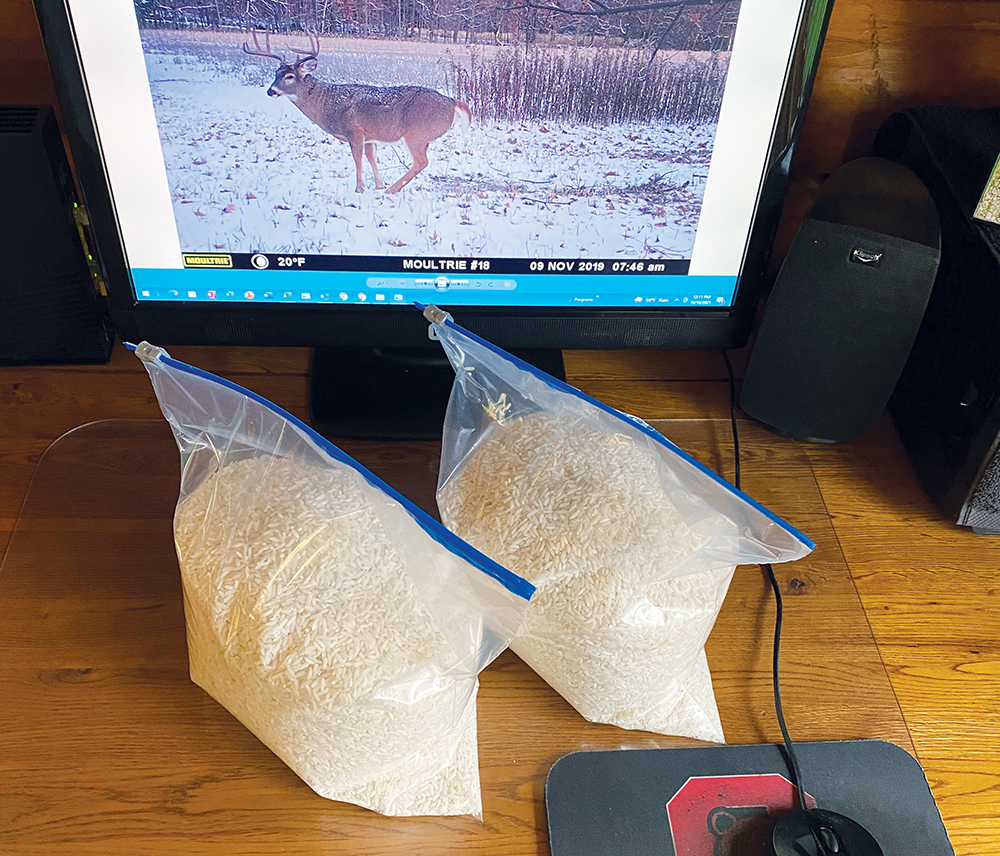There’s a new trick I’ve found to “rescue” a trail-camera that has picked up moisture. You may already be aware of this, but I wasn’t until some dummy (me) was in a rush while swapping SD cards and left the door open on two cameras.
The cameras were left with their access doors open for 11 days through some heavy rains. I figured they were toast. But when I turned them on, they both fired up even though I could see moisture on the inside of the camera lenses. I took them both home and tested them. Sure enough, the images produced were completely fogged and unusable. I kept the cameras in the house for a few days to see if the moisture would evaporate. It did not.
However, I found that I could still change all of the parameters in the set-up mode on both cameras: date, capture mode, photo delay, etc. So I decided to try to eliminate the moisture inside the cameras. I first blew hot air on them with a hair dryer, which did not help at all. Then I searched online for ways to dry out a water-damaged cell phone. Placing the phone in uncooked rice came up as a possible solution. Yes, I’d heard about the “rice fix” for phones, but it didn’t immediately come to mind for use on my trail-cameras, maybe because I’ve never had reason to actually try it on a cell phone.
The rice trick isn’t just for cell phones. There’s a trail-camera inside each of the gallon bags of rice in the photo above.
I bought two 5-lb. boxes of rice, removed the batteries and SD cards from the cameras, and put them in gallon zipper bags filled to the top with rice. (In the photo above, the cameras are inside those bags of rice.) I left the cameras in the sealed bags for six days, and when I checked them there was no observable moisture on the lenses. I tested them both at home, and the images were normal with no sign of moisture or fog. Both cameras are now back in use and have functioned perfectly for several weeks.
It’s doubtful the rice would have helped had the cameras been totally immersed. But for minor moisture issues affecting the lens, it worked great. Bottom line, $6 worth of rice saved me about $250.
About the Author: John Hammer of Middlesex, New York, is a long-time NDA member and trail-camera enthusiast.
